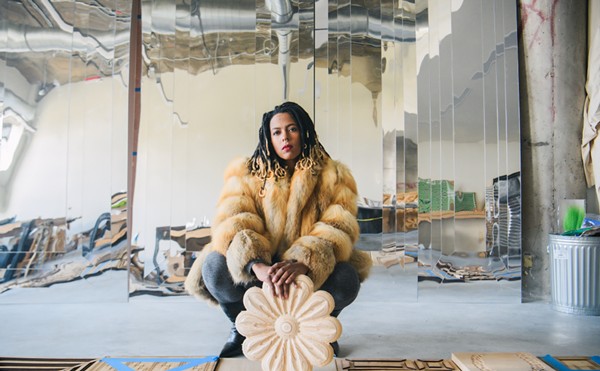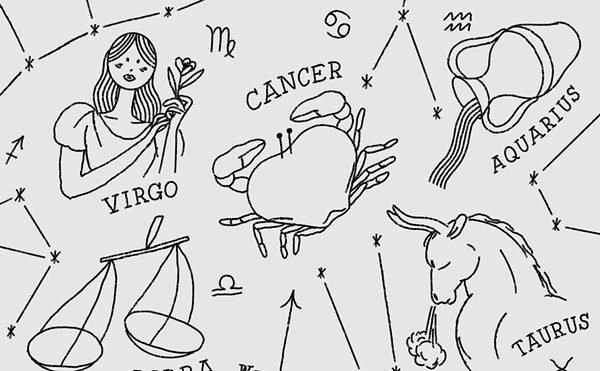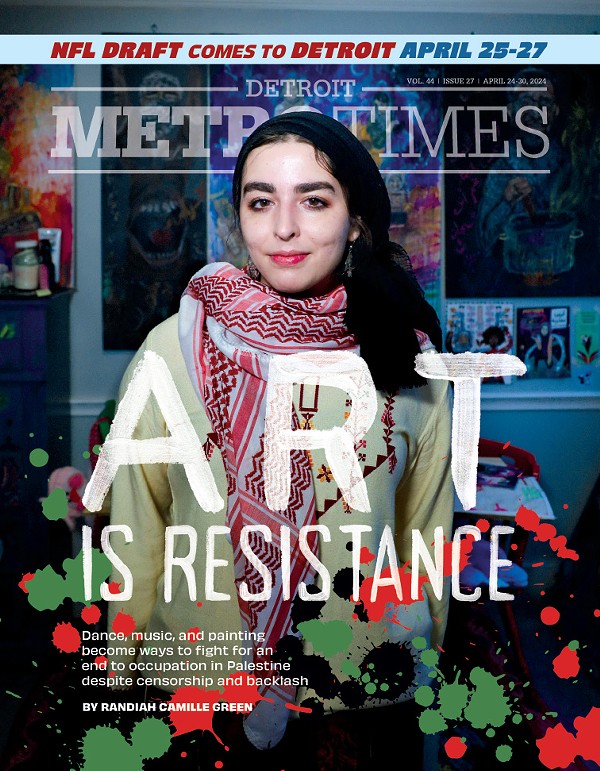F. Scott Fitzgerald said that “the test of a first-rate intelligence is the ability to hold two opposed ideas in the mind at the same time and still retain the ability to function.” Artist Jennifer Reeves’ latest work, now on view at Birmingham’s David Klein Gallery, cagily balances opposites to seamlessly form a unique aesthetic whole.
In her new paintings and works on paper, Reeves, a Birmingham Seaholm graduate living and working in New York, adeptly combines abstract and realist imagery and employs both formal and expressive techniques. Her art contains visual and verbal components that are by turns sincerely ironic and ironically sincere, as conveyed in titles like “Let’s Explore Our Feelings,” and by snippets of text poking fun at creative truisms while at the same time daring to be taken at face value.
In “Certain Disaster,” a pylon of geometric color swatches asks a red paint squiggle on the road ahead: “Hey, did you bring the eternal hope?” as they move into a blind curve. The paintings’ small scale — all 11 inches by 14 inches — paradoxically provides a framework for considering big issues about art.
Reeves draws from the modernist stylebook to explore questions of artistic authenticity, much like a jazz musician riffing on a Tin Pan Alley tune in search of a personal sound. In “Abstraction Gets Inspired,” thickly brushed whorls of saturated color that could have escaped from a 1960s color-field painting are formed into an upright figure standing in the right foreground of an austere gray landscape. A simply sketched-out horizon line and scumbled washes depicting a wintry sky are punctuated by a lone red bird in the upper left corner. The landscape looks like it comes straight out of Milton Avery’s art (whose work coincidently can be seen through November at Robert Kidd Gallery, a few doors down from Klein, in another show worth checking out).
But Reeves isn’t trucking in the “been-done” jadedness of postmodern image appropriator Sherrie Levine or the bluster of neo-expressionist Julian Schnabel. Instead, she declares an ambition to add something new to the conversation while showing some anxiety about the challenges of doing so at this late stage in the game. The imagery’s diffidence tentatively acknowledges that imitators borrow but artists steal. And yet it also expresses doubt, on the maker’s part, as to which category she belongs. It’s a conundrum neatly summed up in the title of the painting “Bittersweet,” a companion piece to “Abstraction Gets Inspired” that reverses the composition by putting a colorful figure on the left and the bird, this time rendered in black and white, on the right.
Reeves’ work is installed against a backdrop specifically created for the exhibition. The front and back gallery walls are painted flat umber, while the walls on either side are pale blue with undulating stripes of ochre, russet and other earth tones. The resulting retro-moderne ambience risks being labeled decorative — still a derogatory term in a contemporary art world that demands what Texas artist Terry Allen calls “important-looking art” to justify the big bucks the art often charges.
But the backdrop serves a number of concrete purposes. By drawing attention to the gallery environment, the installation plays with the conceit of the white cube that’s supposedly the ideal setting for art-viewing. In Reeves’ case, it’s easy to imagine the intimacy of her fastidiously executed acrylagouaches (a combination of acrylic and opaque watercolor) being overwhelmed by ambient light bouncing off conventional white walls. More than that, the installation establishes Reeves’ control over her presentation in a commercial context, a sometimes problematic situation she’s commented on in the past, even as she has depended on it for her livelihood. There’s also, no doubt, gender politics afoot — “decorative” is considered negative in part because of its historical associations with crafts and other “women’s work.”
In the past few years, Reeves has begun to directly comment on art issues, including opining on other people’s work in essays and reviews that appear most frequently in NYArts magazine. The Klein exhibition is accompanied by a text titled “Pthalo Blue Ponders It All,” a fictionalized account of Reeves’ artistic development. Part personal confession, part aesthetic manifesto and part art world exposé, the text complements the work and vice versa. And, like the work, it navigates between soul-searching and shtick.
Another way to express Fitzgerald’s concept of first-rate intelligence is “functional cognitive dissonance,” juggling conflicting values as a way of getting by. From this perspective, Reeves’ art is an apt metaphor for living in today’s world.
Pthalo Blue Ponders It All runs through Dec. 17 at David Klein Gallery, 163 Townsend St., Birmingham; 248-433-3700.
Vince Carducci writes about art and culture for Metro Times. Send comments to [email protected]




